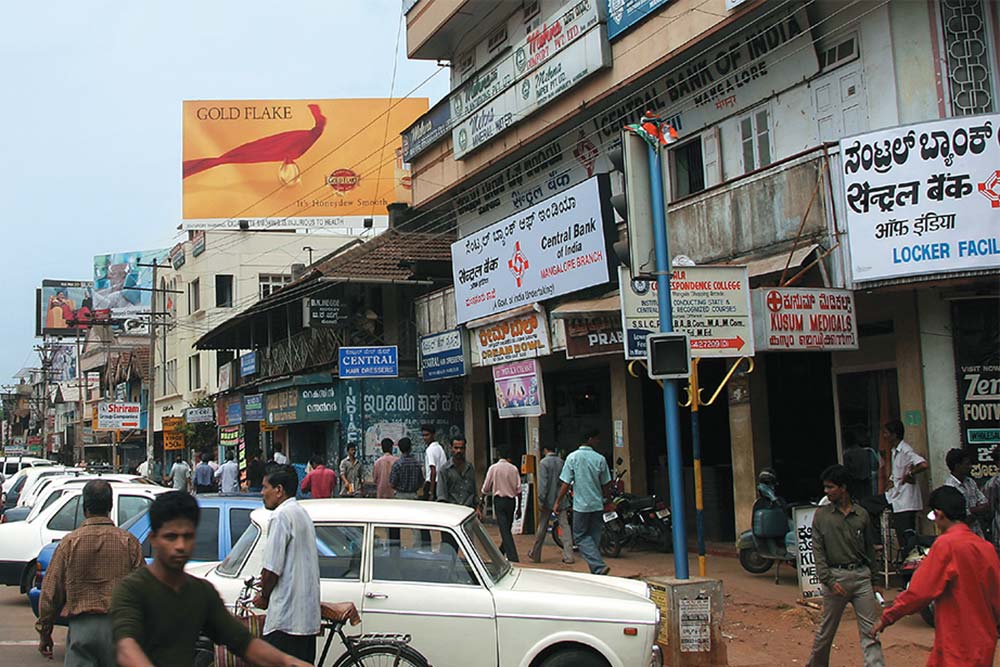It’s the best part of his job, visiting company stores across East India and listening to what buyers have to say. Aayush Rungta, director of the Kolkata-based Hoffmen Fashions, says customers in the company’s nine stores in the West Bengal capital have a single-point agenda: buy what they need and get out of the store as soon as possible. That’s not the case with shoppers in places like Asansol and Durgapur — there, people take their time to try out several styles, ask for advice from the store assistants and even offer suggestions on what the store should stock.
“Don’t think people in small towns aren’t aware of fashion trends,” Rungta declares. “We started our women’s range of denimwear because customers kept demanding it.” Started in 1991, Hoffmen’s range of men’s wear quickly became a local favourite in Kolkata — sales were especially brisk during the puja season. The honeymoon lasted for a decade or so, until competition from large Indian and multinational brands intensified.
Sales in Kolkata started dropping, but the company was prompt in its response. For the past four-five years, Hoffmen has deliberately moved away from the metro, preferring to focus on smaller towns and cities in East India and the seven sisters in the North East. Of its 45 exclusive outlets, nearly 30 are in places like Jharsuguda, Barpeta and Devgarh, and of the 10 new showrooms planned for 2012, seven will be in tier 2 and tier 3 towns. Already, over 45% of Hoffmen’s ₹40-crore sales comes from non-metros and this is only growing. “We aren’t strictly a regional brand,” cautions Rungta. “But we are a region-focused brand.”
And that can be a paying proposition. As a growing group of companies across India is proving, you no longer have to be necessarily present in a metro to ensure your business is a success. Focusing on tier 2 and tier 3 towns in India can be just as effective — if not more — in growing a business. And many first-generation entrepreneurs are deliberately seeking opportunities in the interiors of the country. The following pages track some of their stories.
Big business in small-town India isn’t a new phenomenon by any means. There are several billionaires to be found in the interiors of the country, from Kanpur to Kolhapur and beyond. Typically, though, they’ve made their riches in traditional businesses: agri-based, textiles, infrastructure and the like. The businessmen featured in this issue are a different breed — they’ve deliberately sought out these locations to set up businesses that would be just as popular in big cities. Be it BPO, healthcare, multiplexes or spas — these are modern enterprises, designed to appeal to a younger generation of Indians.
Not the easy option
There are several advantages to starting a business that stays focused on smaller towns and cities. If you’re a real estate company like T3 Urban Developers, the biggest advantage is cheap land. If you’re a BPO outfit in the North East, like Anjaybee Infotech, you can populate your offices with a whole generation of youngsters who would otherwise move out of the region in search of work. If you’re a multiplex developer like Stargaze Entertainment, you may be the only source of entertainment in a radius of a few hundred kilometres, so you’re assured of your audience.
But that doesn’t mean it’s easy doing business in these markets. Without exception, companies operating in non-metros complain of the lack of trained, employable manpower. There aren’t too many people willing to move to the hinterland and the inability to find good managers is hampering many businesses. Even a company like Samruddhi, whose founding family has been settled in Sangli, Maharashtra, for more than a generation and, therefore, understands the city well, mourns the fact it has to “make do” with whatever talent is available. The Vaatsalya chain of hospitals, on the other hand, has no choice: it invests in training nurses and support staff from the local population for its hospitals in places in interior Andhra Pradesh and Karnataka like Ongole and Tarikere.
Not surprisingly, the catchment areas in these markets is smaller than it would be in a large city, which naturally impacts the earning ability. Moreover, the target customers usually demand greater value for money, even if their capacity to pay is as high as their counterparts in big cities. The Naturals Spa chain, for instance, charges 15-20% lower rates for its services in places like Pollachi and Nellore compared with what the salons in Chennai charge (it follows the differential policy unless the franchisee specifically says the market will accept metro rates). Interestingly, the average realisation from metro and non-metro salons is similar, which only proves that small towns lack neither aspiration nor income.
The challenges don’t appear to deter these companies. Many have started to look beyond their local markets, and are keen to check out the scalability and sustainability of their business model. Some, soon after their first flush of success in their local market, are preparing to go national, and even test international waters. There are also a few focused ones who prefer to connect the dots of small towns into a hub-and-spoke network. Gaurav Marya, president, Franchise India, which offers franchising and retail solutions for SMEs and corporates, says 30% of the company’s business comes from regional brands. “There is a dearth of brands in small towns. Most have not kept pace with the aspirations of consumers.” One thing is clear: middle India businesses in tier 2 and 3 cities and towns are clearly on the move.
Scaling up not only acts as a barrier to competition but also helps ward off threats from brands waiting to acquire ‘ripe’ businesses. There’s another benefit: it brings tier 2 businesses to the notice of potential investors. Ravi Kiran agrees. One of the four founders of Friends of Ambition, an advisory that helps ‘rising enterprises of middle India’, he says there are around 50,000 enterprises with a turnover of ₹10 crore or more in 60-odd non-metros with population between 500,000 and 6 million. “There is a growing hunger among small-town businesses to build a regional footprint and then go pan-India,” he says. For now, these small-town stars are happy with their state of affairs. After all, there is so much more room for them to grow.











